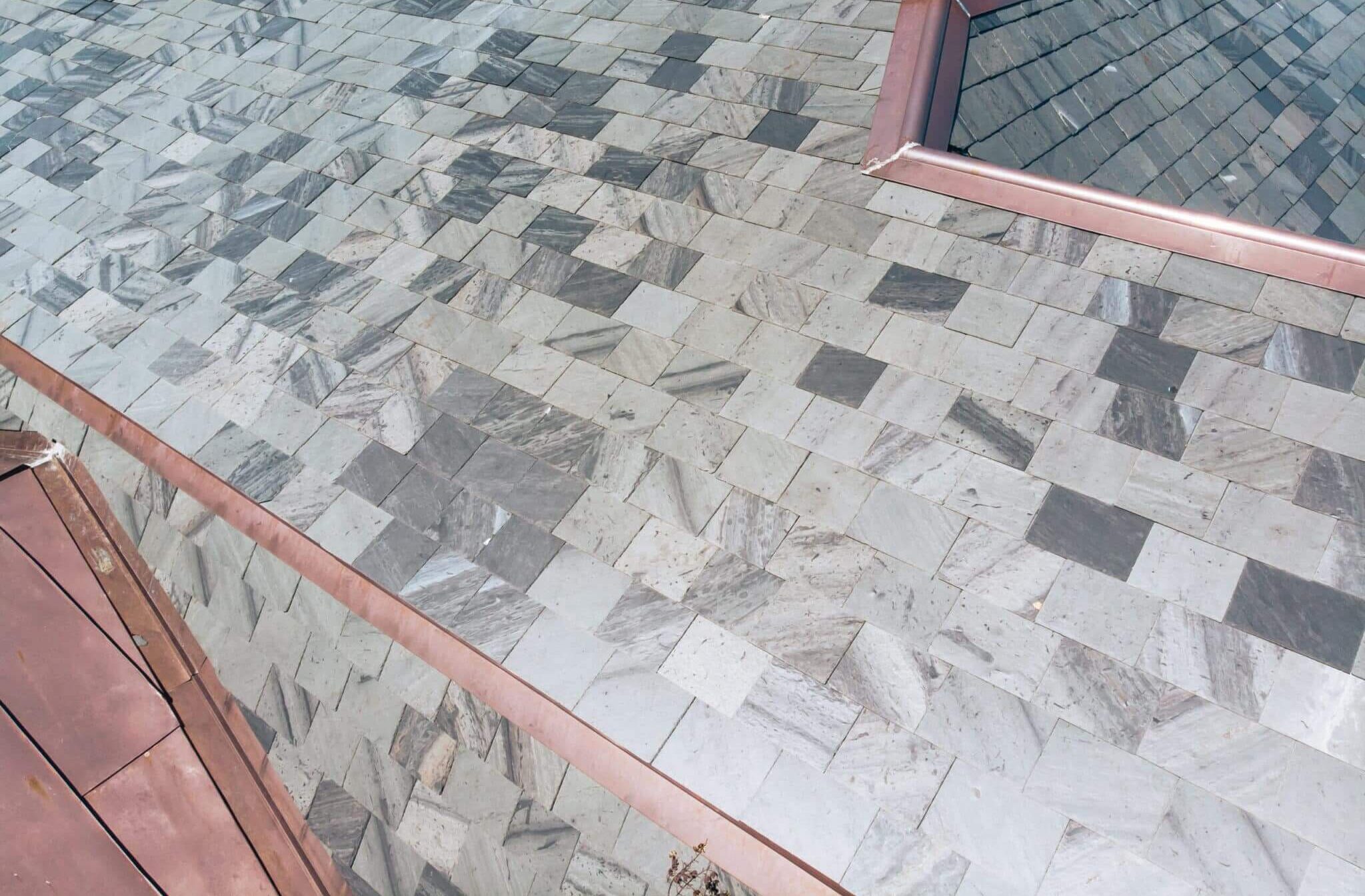Top 7 Benefits (And Drawbacks) of Slate Roofing
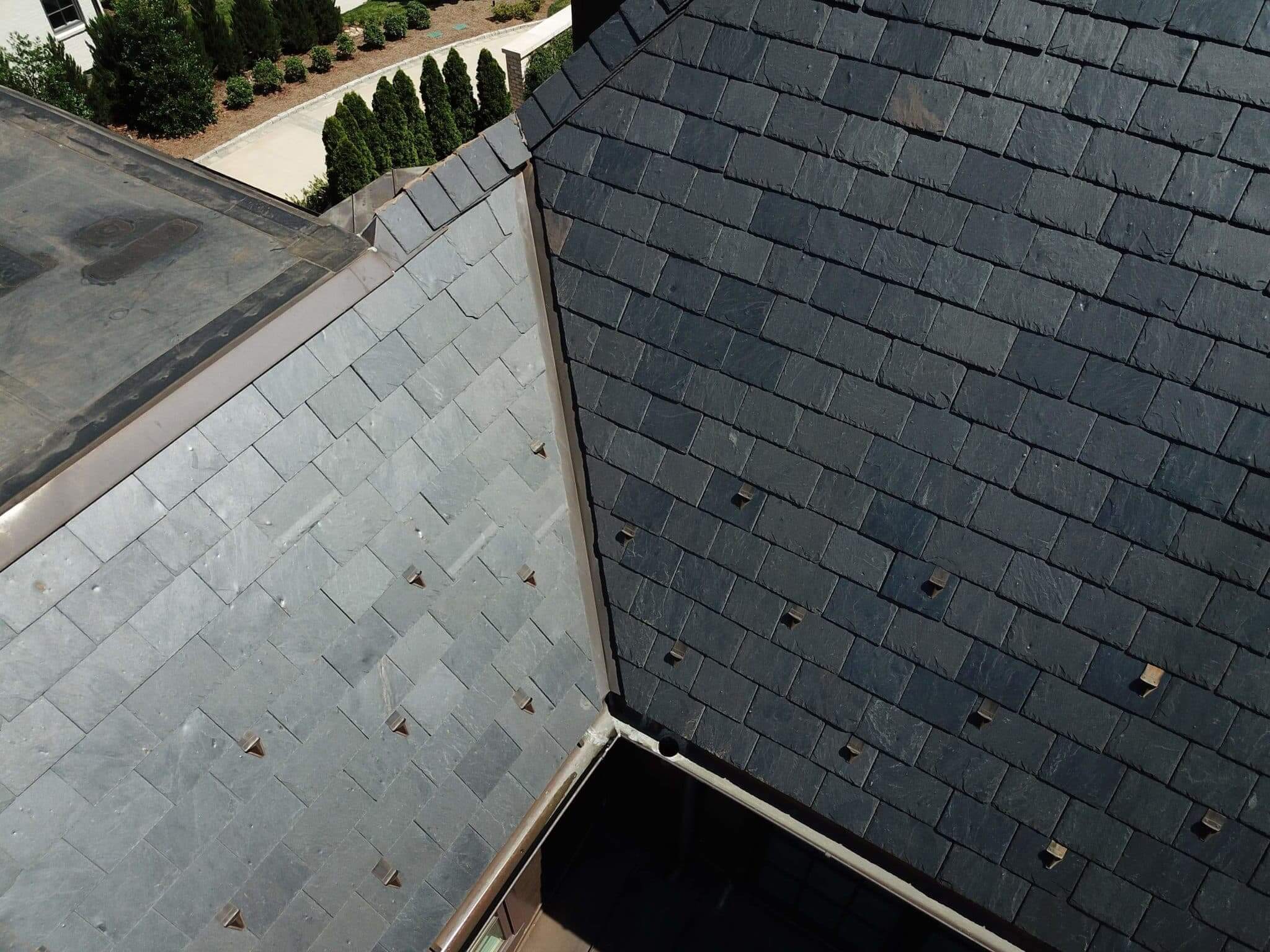
Slate roofing has a long and storied history, widely recognized as one of the most durable and fire-resistant roofing materials on the market. Cut from metamorphic rock, slate forms under intense heat and pressure, producing dense, durable tiles that can be split into thin layers. Each tile is hand-shaped from these natural stone blocks, giving every roof a one-of-a-kind appearance.
Slate has been installed on European buildings for centuries, particularly in regions such as Wales and northern Europe, where high-quality deposits are abundant. Slate roofing reached peak popularity in the 19th and early 20th centuries but declined with the rise of less resilient but more affordable asphalt shingles. Today, however, slate is still valued for its longevity, sustainability, and timeless appearance—by those who can afford it, at least.
In this article, we’ll cover the most important benefits and drawbacks of slate roofing, equipping you with all the information you need to decide whether a slate roof is right for your home.
Quick Answer
Slate roofing is a type of roofing material made from natural metamorphic rock split and cut into thin but durable tiles. Known for its strength and longevity, slate can last 80 to 100 years when properly maintained and provides strong resistance to fire, wind, rain, and hail due to its density.
Slate is also considered environmentally sustainable because it is a natural material that can be safely returned to the earth at the end of its use. However, it’s more expensive than other roofing options and can take longer to install, making it best for those who can handle the high upfront cost.
Explore Baker’s Slate Roofing Options for Your Home in the Carolinas
Baker Home Exteriors offers slate roofing repair, replacement, and installation services throughout North and South Carolina.
Fast and free estimates.
Benefits of Slate Roofing
Without a doubt, slate is one of the most resilient and high-quality residential roofing materials you can find, and it is absolutely worth using for those who can deal with the high price tag. Here’s why:
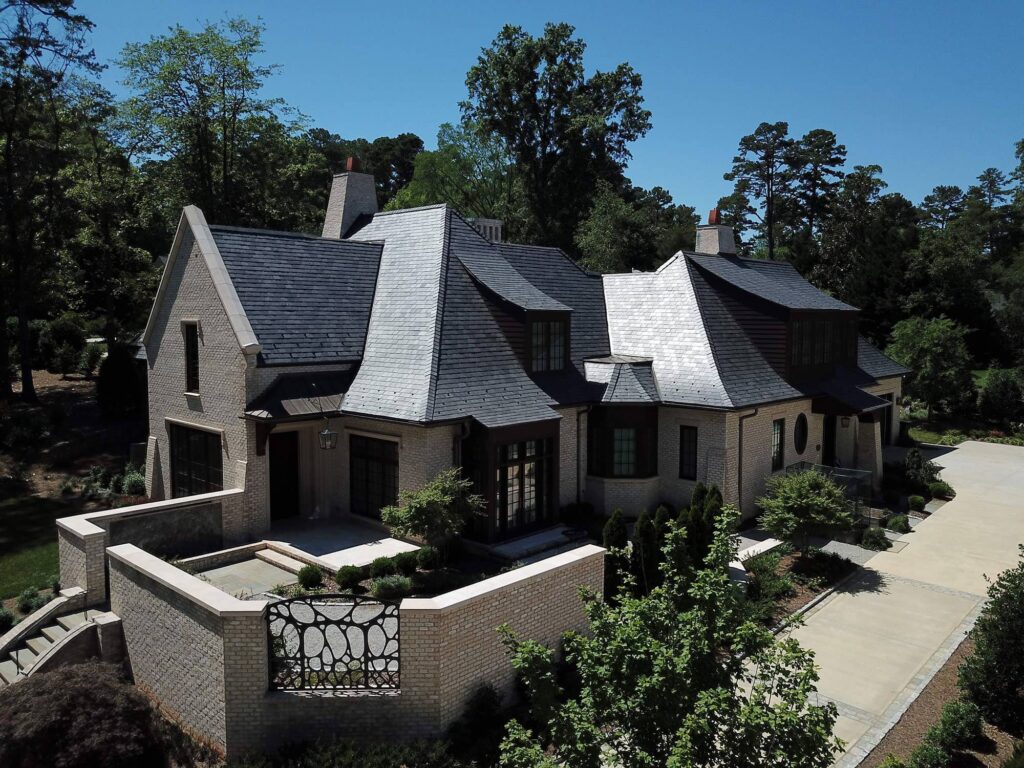
1. Aesthetic Appeal
Natural slate offers a wide range of colors, most commonly black, gray, green, red, and purple. These differences, combined with ample variations in thickness and texture, create visual depth that allows slate to complement nearly any form of architecture. Plus (and depending on your priorities, maybe more importantly), a slate roof adds to a home’s long-term value precisely because of this aesthetic reputation, increasing your potential resale price.
When optimizing for curb appeal, Baker Home Exteriors recommends that you prioritize blending with your home’s style. Below are some considerations for how to match different types of slate with your home’s unique qualities:
Guide on Slate Colors
| Slate Color | Best For (Architectural Styles) | Pairs Well With (Exterior Colors/Materials) |
| Black/Dark Gray | Colonial, Federal, Georgian, Modern | White, red brick, beige, natural stone |
| Green | Craftsman, Cottage, Tudor | Earth tones (tan, cream, natural wood) |
| Red/Purple | Victorian, Gothic Revival, Queen Anne | Painted wood in cream, gold, or soft gray |
| Multicolor | Eclectic, Mediterranean, Transitional | Stucco, limestone, textured brick |
| Light Gray/Blue-Gray | Cape Cod, Coastal, Contemporary | White, blue, or pale gray siding |
Did You Know?
In warmer climates, lighter slate colors such as light gray or blue-gray can help reflect sunlight and reduce heat absorption, which keeps your home cooler during summer months. This not only improves your comfort but can also lower air conditioning costs and extend the life of your roof under intense sun exposure.
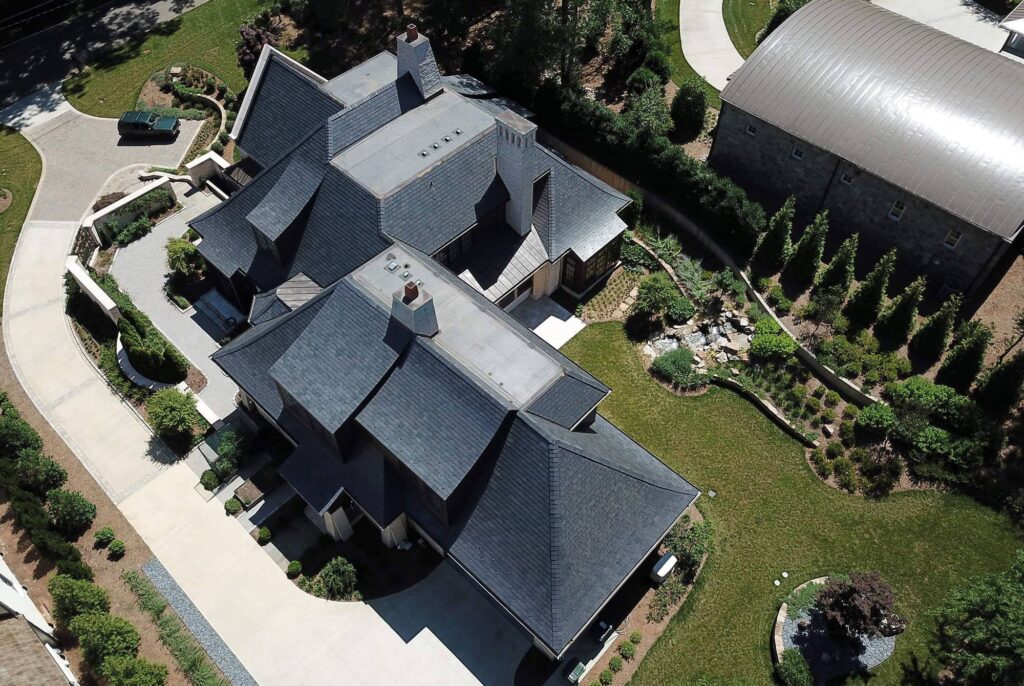
Guide on Slate Thicknesses
| Slate Type | Typical Thickness | Best For |
| Standard Slate | ¼–⅜ inch | Most residential roofs |
| Heavy-Grade Slate | ½ inch or thicker | Historic or custom homes |
| Textured/Rough-Split Slate | Varies | Rustic or cottage-style homes |
| Smooth Slate | ¼ inch | Modern homes |
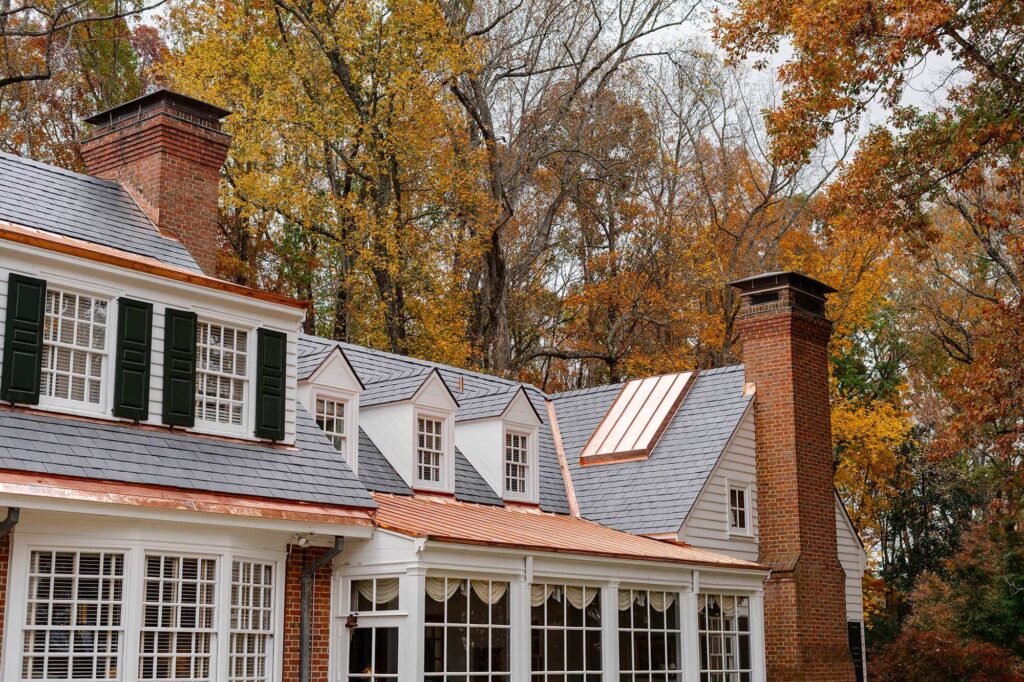
Did You Know?
In colder climates, thicker or heavy-grade slate tiles are the better choice for long-term performance. The extra density helps the roof resist cracking, chipping, and moisture intrusion caused by repeated freeze-thaw cycles. It also offers improved protection against hail and heavy snow loads, common in mountainous or northern regions.
2. Weather Resistance
Slate roofing performs exceptionally well under extreme conditions. Its weight, typically between 800 and 1500 pounds per hundred square feet, helps it resist wind uplift, hail, and heavy rainfall. Also, as a strong form of stone, slate tiles are not affected by rot or insect damage, so they’re a low-maintenance material that nonetheless stands the test of time.
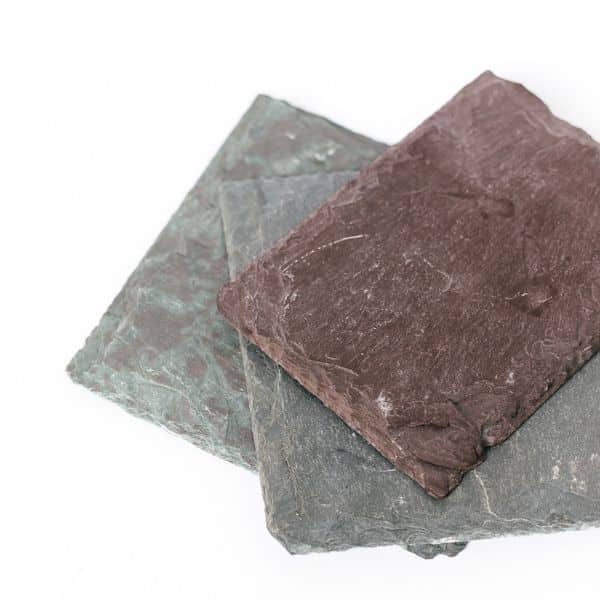
3. Durability and Long Lifespan
When properly installed and maintained, slate roofs can last from 80 years to well over 100 years, with some historic examples exceeding even that.
This longevity makes slate especially well-suited for historic and period buildings, where endurance and authenticity to their roots are priorities.
4. Fire Resistance
Slate is one of the most fire-resistant roofing materials, holding a Class A fire rating due to its non-combustible composition. This offers added protection in areas prone to wildfires or airborne sparks. So, if you live in western North Carolina or South Carolina, where forest fires are fairly common, slate may be the right choice for you.
5. Environmental Benefits
Environmentally, slate is a 100% natural and eco-friendly material; it contains no harmful chemicals and can be safely returned to the earth after use. Its density also provides modest natural insulation, helping to regulate indoor temperatures throughout the year. That both lessens your energy costs and reduces your home’s CO2 emissions.
Your Dream Home Exterior Is Possible
Our expert craftsmen are here to help bring your vision to life. Ready to get started?
Drawbacks of Slate Roofing
Still, slate roofing is not without its issues; after all, with high quality comes a high price tag. Below, we’ve provided an overview of the most pressing drawbacks of slate roofing.
1. Cost
The average cost of slate roofing ranges from $10 to $30 per square foot, or roughly $30,000 to $60,000 total for a 2,000-square-foot roof. This makes slate one of the most expensive roofing options available.
Still, while natural slate’s initial price is high, it can last four to five times longer than asphalt shingles, reducing replacement frequency and long-term expenses. To compare the average prices of slate roofing with those of other roofing materials, check out this table:
| Roofing Material | Average Cost per sq. ft. (Installed) | Average Lifespan |
| Asphalt Shingles | $4 – $8 | 20 – 30 years |
| Metal Roofing (Steel or Aluminum) | $8 – $14+ | 40 – 70+ years |
| Wood Shingles/Shakes | $8 – $12 | 25 – 40 years |
| Clay Tiles | $12 – $25 | 80 – 100+ years |
| Concrete Tiles | $11-$15 | 30-40 years |
| Synthetic Slate/Composite Roofing | $9 – $16 | 40 – 60 years |
| Natural Slate Roofing | $10 – $30 | 80-100+ years |
2. Installation Considerations
For slate roofing, installation demands highly skilled labor and specialized equipment, adding to both your project’s completion time and its overall expense. For instance, because of slate’s weight, some buildings may need extra structural reinforcement before installation.
Over time, repairs can also be costly, as matching replacement tiles requires careful craftsmanship. Additionally, the installation process can take longer than for other roofing materials, as each tile must be set with precision to ensure longevity and weather resistance.
Still, slate’s extended service life and minimal maintenance can offset the high initial investment over decades of use, making it a practical long-term choice for homeowners who can afford the high upfront costs.
Frequently Asked Questions (FAQs)
Slate roofing is a type of roof covering made from natural metamorphic rock that is split into thin, durable tiles. Because slate is dense and non-porous, it resists water absorption and fire, making it one of the longest-lasting roofing materials available.
Slate roofing material is made from fine-grained metamorphic rock composed mainly of sedimentary rock like quartz and clay. These minerals form natural layers that can be split and shaped into roofing tiles by hand, giving slate its distinctive strength.
Slate is used for roofing because it’s remarkably durable and known for its impressive natural beauty. It’s also resistant to fire, rot, mold, and insects, and can last well over 100 years when properly installed.
The average cost of slate roofing ranges from $10 to $30 per square foot installed, depending on the roof size and local labor rates. A typical 2,000-square-foot home may cost between $30,000 and $60,000 for a complete slate roof installation.
Slate is significantly more expensive than asphalt shingles or metal roofing, but it also lasts much longer. Asphalt shingles average $4–$8 per square foot with a 20–30-year lifespan, while slate can last 80–100+ years, often making it more cost-effective over time but not ideal for shorter-term roofing projects.
Final Thoughts: Should I Buy Slate Roofing?
Slate roofing remains one of the most enduring and environmentally responsible roofing materials, even if it comes at a high price. That’s because, although installation and repair require expertise and a higher upfront cost, slate’s century-plus lifespan and sustainable qualities make it a lasting investment in both function and architectural character. So, as long as you have the money to handle the initial investment, slate roofing is an option worth considering for your home.
Want a Slate Roof for Your Home? Baker Has You Covered
Are you interested in installation, repair, or replacement of a slate roof for your home in North or South Carolina? For over 110 years, Baker Home Exteriors has provided high-quality service to Carolinians, at a profit if we can or at a loss if we must.
If you’re ready to take the next step toward your dream home, use the button below to request a free roofing estimate, or if you still need time to think, check out our Google reviews. Contact us today and let our family take care of yours!
